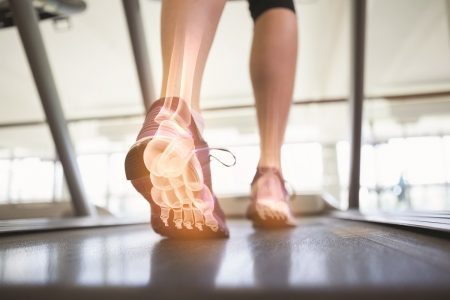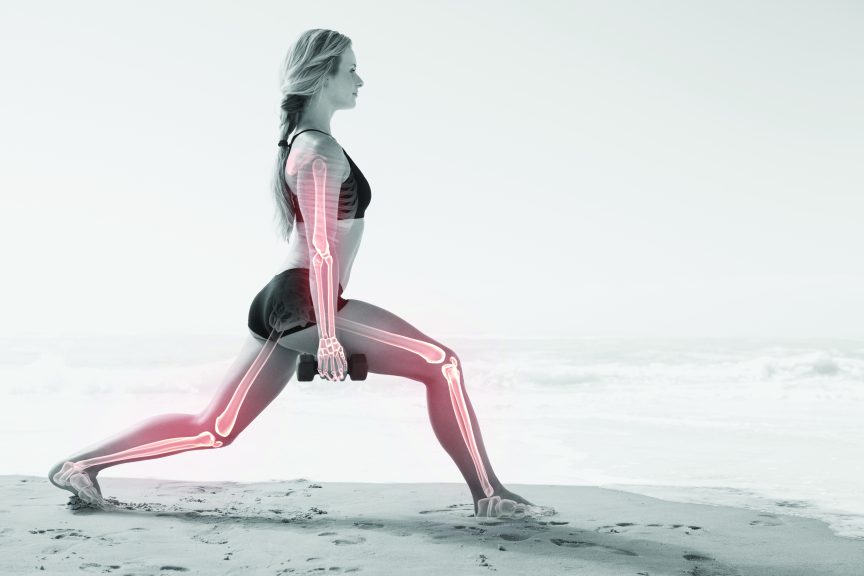

Dr. Nicole Cotter
Those of you who are my age will remember marketing campaigns from the dairy industry that set out to convince America that milk was necessary to have strong bones.
In the 1980s, TV commercials told us that “Milk: It does the body good.” Later, we would see a barrage of celebrities with white mustaches asking if we “Got Milk?” Even Superman was pictured with his cape flying in the wind, muscular arms crossed over his chest, white milk mustache in place, next to the statement “even if you’re not from Krypton you can have bones of steel.” What does it really take to have strong bones?
Bones are part of our intricate skeletal system. They provide structural support to the body, aid in movement, protect internal organs, store minerals and are a site for the production of blood cells. We are constantly breaking down and building bone, a process known as bone turnover. Bone turnover is a normal and necessary process, dependent on an adequate and constant supply of nutrients. Some of the key nutrient players in bone health are calcium, vitamin D, magnesium, and vitamin K.
We typically achieve peak bone mass, or the most bone mass we will have in our lifetime, in our 20s. The peak bone mass we achieve is influenced by genetics and lifestyle factors, such as diet and physical activity. Bone density decreases with age and the decline is facilitated in women around menopause when we lose estrogen and its protective effect on our bones.
Youth and adolescence are extremely important with regards to bone health because it is during this time that we are building our bone mass. Lifestyle during this time will help to shape the health of the skeletal system later in life.
Osteoporosis is a skeletal disorder in which bone strength is weakened, putting an individual at greater risk of breaking a bone. Osteoporosis occurs when bone turnover is out of balance and the body loses more bone than it builds. Although bone loss naturally occurs with age, osteoporosis is not simply a disease of aging. There are other factors at play, including how much bone is built in youth, nutrition, exercise and hormonal status. Risk factors for osteoporosis include age, female gender, family history, ethnicity (Caucasians and Asians are at higher risk than African Americans), and certain diseases and medications. Smoking is detrimental to the bone, as well as excessive alcohol use.
Bone density is measured using a dual energy x-ray absorptiometry (DXA) scan. This is a noninvasive scan done in a doctor’s office or hospital. The information from this scan is used to determine if your bone density is normal, low, or in the osteoporotic range. The information from a DXA scan can also be used, along with several other factors, to determine your fracture risk over the next ten years.


Benjamin Franklin said that an ounce of prevention is worth a pound of cure, and this holds true for bone health. The prevention of osteoporosis involves building strong bones when we are younger and minimizing bone loss as we get older. Kids should have adequate nutrition, meaning a varied diet rich in vitamins and minerals that supports a healthy skeletal system and limitations on inflammatory foods (like sugar and refined flours) that can negatively affect bone development. Regular physical activity in youth helps to build strong bones. The use of tobacco and alcohol in adolescence should be strongly discouraged, as both substances are harmful to the developing skeleton. As an adult, continue to eat an anti-inflammatory diet rich in bone-supporting nutrients. Eat enough protein. Don’t smoke. Don’t drink alcohol in excess. Weightbearing exercise, or exercise done while bearing weight on your legs and moving against gravity, is important for building and keeping strong bone. Do weightbearing exercise regularly, such as walking for 30 minutes a day. Muscle-strengthening exercises are also useful for building and maintaining bone density. If possible, avoid medications that increase bone loss, such as corticosteroids and some heartburn medications.
Supplements are frequently used to increase calcium intake, but they are not always necessary or recommended. The U.S. Preventive Services Task Force, for example, does not recommend calcium or vitamin D supplements in healthy individuals who are not deficient. The best way to get bone-supporting nutrients is from the diet. The recommended daily allowance for calcium in adults is 1000-1200 mg, depending on age. Foods rich in calcium are green leafy vegetables, nuts and seeds, beans, fish, and dairy. Vitamin D can be obtained from fatty fish or fortified foods, but most vitamin D is obtained from synthesis in the skin when exposed to the sun. Foods rich in magnesium are dark green vegetables, legumes, grains, and nuts. Greens and other vegetables also provide vitamin K. There has been concern that getting too much calcium in supplement form may contribute to plaque buildup in the arteries, but a diet that includes calcium-rich foods appears to be protective. If calcium supplementation is necessary, it should be part of a broader strategy that also includes other nutrients vital to bone.
So, what does it take to have strong bones like Superman? Eat well. Stay active. Give your bones the nutrients they need. Avoid things that compromise bone density. The best way to have strong bones when you are older is to foster strong bones when you are younger and to care for your body as it ages.








